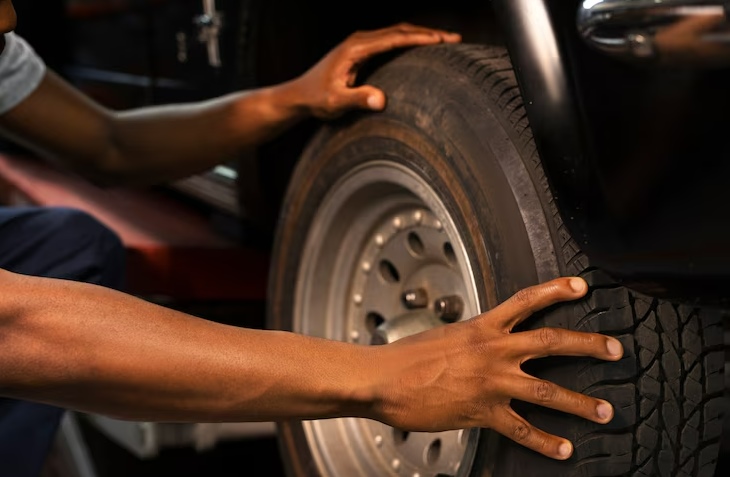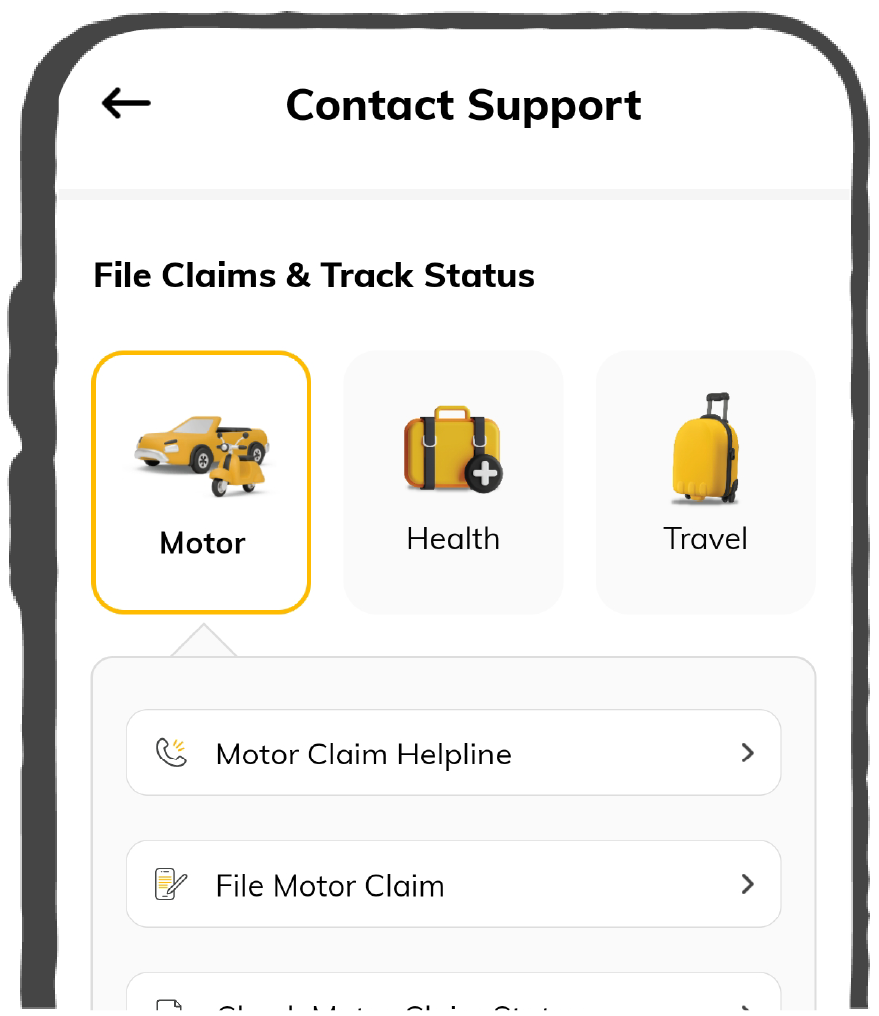Car Tyre Upsizing Benefits, Drawbacks & Calculation

Tyre upsizing replaces a vehicle’s original tyres with wider or larger ones. This is usually done to improve the vehicle's performance. Many car enthusiasts consider tyre upsizing, as it beautifies the car and improves its handling, grip, and smoothness in driving.
Knowing in-depth details regarding tyre upsizing, benefits, and disadvantages is essential before making the final decision so you know everything.
Keep reading to learn more about tyre upsizing and how it’s calculated!

Table of Contents

What is Tyre Upsizing for Cars?
Tyre upsizing means replacing or fitting larger-diameter tyres that are wider than the existing ones on a vehicle. Such a modification can enhance the vehicle's look, handling, and grip. However, enhancement must be appropriately planned.
It also means increasing the sidewall aspect ratio, influencing the overall diameter. Although upsizing tyres can be beneficial in several ways, before considering any tyre upsizes, it is essential to evaluate a vehicle's specifications so that new tyres are well-matched for performance, safety, and driving needs.
What are the Benefits of Tyre Upsizing?
The following are the major tyre upsizing benefits:
Improved Handling
Increasing the size of the tyre most commonly results in a better grip on the road, especially if it is a performance car. While cornering or driving at high speed, a wider tyre's greater surface area offers better traction.
Consequently, it improves handling, increases stability, and smoother the driving experience under extreme conditions, such as taking a rough turn or having a difficult grip on the road surface.
Off-Road Capability
Upsizing car tyres can enhance the driving experience, especially for off-road enthusiasts. Larger tyres are created to provide better traction in rugged terrain, allowing vehicles to go over rocks, mud, and sand.
The increased size also provides better ground clearance, enabling vehicles to traverse uneven landscapes or challenging terrains without getting stuck or damaged.
Better Comfort
The sidewall is bigger with upsized tyres and hence offers better comfort. Larger sidewalls absorb the shock and vibrations of uneven or bumpy roads much better, thus creating a smoother and more comfortable ride. This is especially beneficial for long rides or when driving on rough/uneven roads.
Increased Load Capacity
The other reason for upsizing tyres is increased load-carrying capability. Larger tyres can more readily support heavier weights, which may enhance the vehicle's overall utility by carrying big loads or towing heavy trailers without straining the suspension or tyres.
Aesthetics
Aesthetics is also one reason for tyre upsizing. Larger tyres can completely change the look of a vehicle, making it appear more aggressive and unique. A larger, bulkier tyre matches a vehicle's design well, giving it a more efficient and dynamic look, especially for performance or off-road vehicles.
What are the Drawbacks of Tyre Upsizing?
While tyre upsizing offers numerous benefits, knowing the potential drawbacks is essential. Here are some important factors and tyre upsizing problems to consider before making a change:
Expensive
One of the main drawbacks of tyre upsizing is the cost. Bigger tyres are usually costlier than standard sizes due to the materials and engineering requirements.
Less Acceleration
Wider tyres can decrease vehicle acceleration, increasing weight and roll radius. Wide tyres require more force by the engine to get the car to start rolling, which further reduces acceleration, especially for a quick start or sharp lane changes.
This suggests that although wider tyres have better grip and are easy to handle, the added width makes it harder for the engine to produce sufficient thrust to accelerate rapidly.
Lower Fuel Economy
Another negative impact is that upsizing tyres may lead to a loss in fuel economy. Due to their increased rolling resistance, wider tyres make the engine work harder, thus consuming more fuel. The increased weight plus friction add up over time to reduce the vehicle's mileage per litre.
Inaccurate Speedometer Reading
Tyre upsizing can make speedometer readings inaccurate, as larger tyres cover more ground with each rotation, showing lower speed than the actual one. Thus, drivers may unknowingly drive beyond the set speed limits, putting them at risk.
How to Upsize Tyres for Your Car?
Here is the step-by-step tyre upsizing guide that will help you upsize your car tyre and enhance its performance:
Step 1: Calculate the Right Size
To reduce damaging impacts, ensure you determine the right size of the upsized tyre. Consider how much bigger or wider you want the tyre to be than the vehicle's current size. You can use online calculators or seek consultation from experts.
Step 2: Ensure They Fit Your Car
The recommended size of tyres is usually listed in the owner's manual. These are the sizes that the manufacturers recommend for optimum performance and safety. If you can’t find the recommended size, contact your dealer or an expert to find out the correct size.
Step 3: Understand the Sidewall Aspect Ratio
The sidewall ratio influences the increase in the height of the tyres' upsizing. A higher aspect ratio means a bigger sidewall, which is advantageous for comfort but can also change handling characteristics.
Step 4: Upgrade Other Components
Upsizing tyres can mean changing other components, such as the wheels or rims, to fit the new tyre size. Ensure that your vehicle can carry the weight and size of the new tyres.
Step 5: Consult with Professionals
Consult with tyre professionals before making the switch to avoid any issues.
How to Know the Right Tyre Size for Upsizing Using a Calculator?
You can use tyre upsizing calculators to tyre upsizing properly. These tools help to compare the original size of the tyre to that of the upsized option, enabling the new tyre diameter, width, and sidewall measurements to be calculated.
There are many calculators available online that can help you calculate and choose the right tyre size for your vehicle and model.
Different Types of Tyre Upsizing
There are two primary methods to upsize tyres.
Plus Sizing
This increases the wheel size, maintaining the aspect ratio height instead of the tyre's width. The outcome is a larger tyre with a reduced sidewall, better handling, and a sportier appearance.
Upsizing Section Width
It refers to increasing the tyre's width while maintaining the wheel's size. It provides a wider tyre with a taller sidewall, resulting in a smoother ride with more efficient stability.
Note: Remember that changing tyre sizes can alter your vehicle's performance, so it is best to consult a professional to ensure that upsizing works for your vehicle.
Important Things to Consider Before Tyre Upsizing
While upsizing your tyres, it is vital to consider certain key factors for safety. Some important considerations are as follows:
Adhere to the Manufacturer’s Guidelines
Always check your vehicle manufacturer’s guidelines for recommended tyre sizes to ensure compatibility. This helps avoid damaging the car or affecting its safety features.
Impact on Fuel Economy
Upsizing tyres typically increases the rolling resistance, which can lead to increased fuel consumption. Consider whether the benefits of upsizing outweigh the potential increased operational costs.
Warranty and Insurance Implications
Before making changes, check with your car's warranty provider and insurance company. Upsizing may impact or require changes in your warranty or insurance. Find out if any changes are required and update your policies to protect your vehicle.
Legal and Regulatory Compliance
Lastly, ensure that the new tyre size complies with local laws and regulations to avoid hefty fines or other complications.
Does Upsizing Tyres Affect Ground Clearance?
Yes, upsizing tyres affects a vehicle’s ground clearance, giving a better gap from the ground. This ensures that your car can travel flawlessly, even on rough terrain.
However, it is essential to note that though an increased tyre diameter can offer better ground clearance, it may also impact the vehicle's suspension dynamics, resulting in a change in handling.
Considering upgrading your existing car tyres, consider the key differences between small and wide car tyre options. Contact an expert for more specific information, depending on your vehicle.
What are the Differences Between Smaller and Wider Car Tyres?
The following are the major distinctions between smaller tyres and wider tyres:
How to Maintain Tyres After Upsizing?
Here are a few simple tips to maintain tyres after upsizing:
Regular Inspection
Look out for any sign of wear, cracks, or damage to the tyres regularly. Remember that bigger tyres will wear more unevenly than standard ones.
Alignment of Wheels
The wheel alignment after upsizing requires proper checking by a professional to prevent uneven wear and steering problems.
Rotate Tyres Frequently
Rotate the tyres regularly to encourage even wear and to extend their life for longer.
Balance the Tyres
Upsized tyres with proper balancing can be quiet due to vibrations, poor handling, and uneven wear. So, make sure the weight is evenly distributed around the wheel.
Check for Rubbing
Determine if the upsized tyres rub against the suspension or the wheel wells during cornering or underload.
What are the Changes in Tyre Pressure After Upsizing?
Changes in tyre pressure after upsizing include size and load-carrying capacity, which require specific tyre pressure. Wider tyres usually require higher pressure for proper handling, safety, and performance.
Always follow the vehicle manufacturer's guidelines or seek advice from a tyre professional to get the best pressure for the new tyre size. Incorrect pressure can impact fuel efficiency, tyre wear, and driving safety.
Top Brands for Tyre Upsizing
Selecting the appropriate brand for tyre upsizing enhances the vehicle's performance, safety, and durability. The best quality tyre upsizing brands are:
Most Common Myths about Car Tyre Upsizing
There are many myths surrounding tyre upsizing. However, separating fact from myth to make an informed choice is essential. Here are the most common myths and the truths that dispel them:
Larger Tyres Enhances Braking Performance
Many people think larger tyres improve braking. Although they can offer a better grip, they will also add extra weight to the car, influencing braking efficiency.
Upsizing Tyres Helps Fuel Consumption
A common misconception is that larger tyres improve fuel economy because of their larger road contact. If the tyre's diameter increases above 3%, it begins to affect fuel economy.
Larger tyres create higher rolling resistance, leading to higher fuel consumption. Furthermore, larger tyres may lead to handling problems in your vehicle, thus causing less comfort while driving.
Improved Vehicle Performance
Many think that upsizing tyres will improve the vehicle's performance. Although larger tyres may have some advantages in traction and handling under some conditions, they do lead to poor acceleration and inefficiency in fuel consumption.
How Does Tyre Upsizing Affects Insurance?
Tyre upsizing may affect your car insurance policy. Some insurers treat an upgrade in tyres as a modification, which can influence premiums or even cause a claim to be rejected if the modification has not been disclosed. In this case, always keep the insurer updated on any changes on the vehicle, including tyre upsizing.
Tyre upsizing can revolutionise your vehicle's performance, styling, and off-road capabilities. However, careful consideration is necessary before the upsizing. Though it may have numerous advantages, such as greater grip and a smarter look, it may also pose potential drawbacks, such as poorer fuel economy and handling problems.
The right dimensions need to be calculated, and the implications for vehicle dynamics must be understood. To avoid complications, always check with your vehicle's manufacturer, tyre brand, and legal and insurance requirements.
















